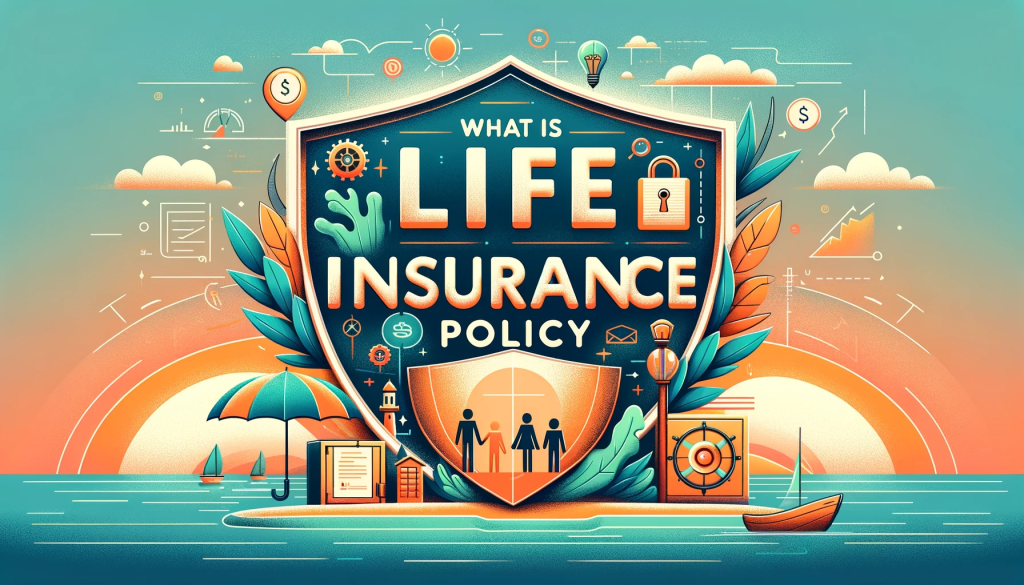An insurance policy, like car or term insurance, is a contract between an insurer and a policyholder. It offers financial protection, with the insurer pledging to pay a specified amount to the designated beneficiary upon the insured individual’s unfortunate passing during the plan’s duration. In exchange, the policyholder consents to making periodic premium payments or a lump sum.
Life Insurance Plans 2024
The advantages of purchasing a life insurance policy extend beyond merely safeguarding the policyholder’s family during challenging times. Certainly, a provider must secure their dependents in the event of their unfortunate and premature passing, an accident, or physical impairments resulting in income loss. There exists an extensive array of additional benefits that render it indispensable.

Till date, many people don’t know that life policies can also be used as loan collateral. Based on the life insurance policy type and surrender value, the policyholder can opt for a loan from a bank or NBFC (Non-Banking Financial Company) as per applicable terms and conditions.
Car Insurance 2023
Loan Amount: Generally, the loan amount is a percentage of the surrender value of the life policy and it can go up to 90%. Few companies only allow for a loan up to 50 per cent of the total premium amount paid by the policyholder
- ✔️ Online Payment Discount
Most individuals are unaware of the online payment benefit (the payment mode chosen by an individual drastically affects the policy premium). As a matter of fact, an company’s administrative costs considerably go down when an individual opts to pay his premiums online.
This is because there is no paperwork-related cost involved. Also, the life insurer is able to save a significant amount on the commission, which they pay to the agents for offline life insurance buying and renewing
Star Health Insurance
Star Health Insurance is a renowned insurance provider dedicated to offering comprehensive health coverage to individuals and families. Founded in 2006, it has emerged as one of India’s leading health insurance companies, strongly committed to providing quality healthcare services.
Why Choose Star Health Insurance?
Choosing the right health insurance plan can be a daunting task. However, Star Health Insurance stands out for several reasons:

-
Wide Range of Plans: Star Health Insurance offers a diverse range of plans, catering to various needs and budgets. Whether you are an indivi-dual, a family, or a sen-ior citizen, there’s a plan tailored for you.
-
Cashless Hospitalization: Star Health Insurance boasts an extensive network of hospitals where you can avail cashless treatment, ensuring you receive the best care without worrying about finances.
-
Prompt Claim Settlement: Their efficient claim settlement process ensures that you receive your claim amount swiftly, reducing the hassle during stressful times.
-
Additional Benefits: Star Health Insurance plans come with additional benefits such as coverage for critical illnesses, maternity expenses, and more.
Please Note- This discount varies from company to company.
- ✔️ Discount as per the Opted Payment Periodicity
- ✔️ Almost every life insurer offers various payment periodicities to its policyholders- annual, half-yearly, quarterly or monthly.
- ✔️ If a policyholder chooses to pay the policy premium annually, the company can use it for investment purposes that automatically means more profits and benefits for the company.
- ✔️ Once a policyholder chooses the payment periodicity, this discount is often already included in the premium rate charged by the life insurer.
Taking Care of Business
- ✔️ some life insurers provide an option for policyholders who own a business. In the case of a policyholder’s demise, their business partners can purchase their share without any hassles. In this scenario, the business partner will simply have to sign an agreement with the life insurer and the pay-out received after selling the policyholder’s share will be given to their dependents.
- ✔️ However, it’s essential to understand that the nominee or the dependents of the policyholder won’t get a stake in the company
Tax Benefits
- ✔️ For paying a life policy premium, a policyholder is eligible for a tax rebate under Section 80C of the Income Tax Act 1961. Irrespective for oneself, their spouse or their children, the premium paid for parents and in-laws is exempted.
- ✔️ This benefit is offered by all the life insurers – be it private sector life insurers or public sector life insurers.
- ✔️ Additionally, the maturity benefit of life policies also qualifies for tax deductions under Section 10 (10D) of the Income Tax Act, 1961
| Life Insurance Plans | Coverage |
| Term Plans | Pure risk cover |
| ULIPs | Insurance + Investment benefits |
| Endowment Plans | Insurance cover + Savings |
| Money Back Plans | Insurance cover with periodic returns |
| Whole Life Insurance Plans | Coverage for a lifetime |
| Child Plans | To create a corpus for child’s education, wedding etc. |
| Retirement Plans | Financial cushion aiding financial independence post retirement |
How Much Life Insurance Cover Do I Need?
The market has many insurance products such as the term plans , endowment plans, money back plans and ULIPS’. The tax saving instruments is also opulent and people take insurance for Rs 25 lakh, Rs 1 crore and so on. However, simply picking a random figure is not the way to buy an insurance policy
Primarily, it depends upon the age of the person, the number of dependents, liabilities, and so forth. Let us just assume that a person falls between the age bracket of 18-24 years of age and is single and unmarried. This means that he does not have many responsibilities. The financial liability could be a loan or his parents depending upon him. Now under such a situation, a small insurance plan would be bought. In case the person has a good source of income, then he could also opt for large cover as the liabilities will increase once married and there will be additional responsibilities upon the shoulders.
Now if a person falls between the age bracket of 24-33 years of age then ideally the person will be married and he also needs to protect the interest of his life partner. Such a person should buy the life insurance plan immediately and not delay any further. The life insurance cover will differ across various stages of life
car insurance renewal, car insurance renewal, car insurance renewal, car insurance renewal, car insurance renewal, car insurance renewal, car insurance renewal, car insurance renewal, car insurance renewal, car insurance renewal, car insurance renewal,

The life insurance cover should be such that it covers all outstanding liabilities provides money to your spouse and covers the expenses of children education, marriage, etc. When you choose the cover, calculate the yearly family expenses and your liabilities. Now multiply the sum with the years you look forward to supporting the family.
The life insurance cover should be enough at any point in time to take care of the family today and tomorrow
| Comparison of Different Types of Life Insurance Plans in India | ||||||
| Basis | Term Policies | Whole Life Insurance Policies | Endowment Plans | Unit Linked Insurance Plans | Money Back Plans | Pension/Annuity Plan |
| Overview | Term life insurance plans are the simplest form of life coverage. | These plans offer protection till the whole of life and may or may not have an investment component. | These plans offer protection along with investment components. The returns have some guaranteed component that could be as high as 100% guaranteed returns.. | These plans offer market linked returns along with protection components. The investment returns completely depend on the fund’s performance and are not guaranteed by the insurer. | These plans offer protection along with investment components. The returns could be in the form of an income for a fixed period of years. | These plans offer income till a person survives. Some plans also have a return of purchase price on death. |
| Policy Term* | Usually range from 5 years to 50 years | This policy covers the whole life of life insured. | Generally, ranges between 10 years to 35 years. | Term ranges from 10 years to 20 years. | Generally, it can be up to 25 years. | No fixed term. |
| Maturity Benefits | You are not paid any maturity benefit on the survival. | You are paid the maturity benefits while you reach a certain age (maybe between 80 to 100 years). | You will be paid the maturity benefits if you survive the policy term. | You can avail the maturity benefits on your survival at the end of the policy term. | You are offered the survival benefits on the maturity of your policy. | No maturity benefit is offered. You are entitled to a regular income till you survive. |
| Death Benefits | In case of your demise, while the life insurance policy is active, the sum assured is paid to the beneficiary. | In case of your demise, while the life insurance policy is active, the sum assured is paid to the beneficiary. | The death benefit is paid to the beneficiary upon demise of the life insured. | The death benefit is paid to the beneficiary in case of life insured’s demise while the policy is active. | The death benefit is paid to the beneficiary in case of the life insured’s demise while the policy is still active. | A few plans provide a provision to return the amount invested in case of life insured’s demise. |
| Ideal for | These plans are ideal for individuals who are seeking to safeguard the financial interest of their loved ones without paying excessive premiums. | The whole life insurance plans are ideal for individuals who wish to safeguard the financial interest of their loved ones and want to leave a legacy amount | These plans are perfect for individuals who want financial protection and guaranteed investment returns. | This is a best-suited plan for individuals with a medium-term investment goal to expand their portfolio. Moreover, it is an ideal plan for people with high income and good investment sense. | The individuals are looking for securing their life and wanting to earn money at a regular interval of time. Best-suited for individuals seeking protection plus investment benefit. | This scheme is an ideal option for individuals who want to secure their retirement by getting a source of regular income after retiremen |
Best Life Insurance Plans in India 2024
Listed below are the best life insurance plans
| Insurance Plan | Entry Age (Minimum/Maximum) | Policy Term (Minimum/Maximum) | Sum Assured (Minimum/Maximum) |
| Aditya Birla Sun Life Shield Plan | 18/65 years | 10, 20/30 years | Rs.25 lakh/no upper limit |
| Aegon Life i-Term Plan | 18/75 years | 5/40 years | 10 Lakh/ no upper limit |
| Aviva Life Shield Advantage Plan | 18/55 years | 10/30 years | Option A – 35 Lakh/ no upper limit Option B- Rs.50 lakh/ no upper limit |
| Bajaj Allianz i-Secure | 18/70 years | 10/30 years | 20 Lakh/ no upper limit |
| Bharti AXA Life Premium Protect Plan | 18/65 years | 10, 15/35 years | 25 Lakh/no upper limit |
| Canara HSBC iSelect + Term Plan | 18/65 years | 10/30 years | Rs.25 lakh/no upper limit |
| Edelweiss Tokio Life Simply Protect Plan | 18/65 years | 10/40 years | Rs.25 lakh/no upper limit |
| Exide Life Smart Term Plan | 21/60 years | 10 to 40 years | Min SA: Rs. 50L ; Max SA: Rs. 10 Cr |
| Future Generali Flexi Online Term Insurance | 18/55 years | 10/75 years | Rs.50 lakh/no upper limit |
| HDFC Click2Protect Plus | 18 /65 years | 10/30 years | 10 Lakh/10 Crores |
| HDFC Life Sanchay | 30/45 years | 15/25 years | 1,05,673/ no upper limit |
| ICICI Pru iProtect | 20/75 years | 10/30 years | 3 Lakh/ no upper limit |
| IDBI Federal Income Protect Plan | 25/60 years | 10/30 years | N/A |
| India First Life Plan | 18/60 years | 5/40 years | 1 lakh/ Rs.5 crore |
| Kotak Life Preferred e-Term | 18/75 years | 10/40 years | 25 Lakh/ no upper limit |
| LIC Jeevan Amar | 18/65 years | 10/40 years | 25 Lakh/ no upper limit |
| LIC Tech Term | 18/65 years | 10/50 years | 50 Lakh / no upper limit |
| Max Life Smart Term Plan | 18/60 years | 10/50 years | 25 Lakh/100 Crores |
| PNB Metlife Mera Term Plan | 18/65 years | 10/40 years | Rs.10 lakh/no upper limit |
| Pramerica Life U-Protect | 18/55 years | 10/30 years | Rs.25 lakh/no upper limit |
| Reliance Nippon Life Protection Plus | 18/60 years | 10/40 years | Rs.25 lakh/no upper limit |
| SBI eShield Plan | 18/70 years | 5/30 years | 20 Lakh/ no upper limit |
| SBI Shubh Nivesh Plan | 18/60 years | 5/30 years | 75000/ no upper limit |
| Sahara Shrestha Nivesh Jeevan Bima | 9/60 | 5/10 years | Rs.30,000/ Rs.1 crore |
| Shriram Life Cashback Term Plan | 12/50 years | 10,15,20 &25 years | Rs.2 lakh/Rs.20 lakh |
| SUD Life Abhay Plan | 18/65 years | 15, 20/40 years | Rs.50 lakh/— |
| TATA AIA life Insurance Sampoorna Raksha + | 18/70, 65 years | 10, 15/40 | Rs.50 lakh/no upper limit |
How Much Life Insurance Cover Do I Need?
The market has many insurance products such as the term plans , endowment plans, money back plans and ULIPS’. The tax saving instruments is also opulent and people take insurance for Rs 25 lakh, Rs 1 crore and so on. However, simply picking a random figure is not the way to buy an insurance policy
car insurance online, car insurance online car insurance online, car insurance online car insurance online car insurance online , car insurance online, car insurance online, car insurance online, car insurance online, car insurance online, car insurance online
Primarily, it depends upon the age of the person, the number of dependents, liabilities, and so forth. Let us just assume that a person falls between the age bracket of 18-24 years of age and is single and unmarried. This means that he does not have many responsibilities. The financial liability could be a loan or his parents depending upon him. Now under such a situation, a small insurance plan would be bought. In case the person has a good source of income, then he could also opt for large cover as the liabilities will increase once married and there will be additional responsibilities upon the shoulders.
Now if a person falls between the age bracket of 24-33 years of age then ideally the person will be married and he also needs to protect the interest of his life partner. Such a person should buy the life insurance plan immediately and not delay any further. The life insurance cover will differ across various stages of life.
The life insurance cover should be such that it covers all outstanding liabilities provides money to your spouse and covers the expenses of children education, marriage, etc. When you choose the cover, calculate the yearly family expenses and your liabilities. Now multiply the sum with the years you look forward to supporting the family.
The life insurance cover should be enough at any point in time to take care of the family today and tomorrow

What is a Life Insurance Premium?
A life insurance premium is a payment that is to be paid to enjoy the life insurance benefits. The premium is paid annually; however, the mode of premium payment can be selected from monthly or half-yearly also. This premium also helps to grow the cash value of the insurance.
The insurance company determines the premium the policyholder pays to the insurance company. Having said that, the buyer gets to select the term of the policy and the sum assured.
To calculate the sum assured, the insurer takes various factors such as your lifestyle, occupation, number of dependents, finances, sum assured etc. into consideration, term insurance, term insurance, term insurance, term insurance, term insurance, term insurance
Document Required for Buying Life Insurance Policy
At the time of applying for a policy, the life insurer will ask for the below-mentioned KYC documents:
Income Certificate
This is necessary to estimate the sum assured or cover that would be offered to the insured. In most of the cases, the life insurers offer a cover up to 20 times the proposer’s annual income. The standard income proofs include
- ✔️ Salary slips of last 3 to 6 months (depending on the insurer)
- ✔️ Income Tax Returns (ITR) of the last 2 to 3 years
- ✔️ Last 6 months bank statements with continuous entries of 3 months credited salary
- ✔️ If the person is self-employed then a certificate issued by CA.
- ✔️ Latest Form 16
- ✔️ Address Proof
Insurance companies would ask for address details of the applicant. The following documents can be used as address proof
- ✔️ Voter ID card
- ✔️ Aadhaar Card
- ✔️ Saving account bank statement
- ✔️ Passbook with latest 6 months entries
- ✔️ Latest 3 months Credit Card Statement
- ✔️ Driving License
- ✔️ 3 months Utility Bills
- ✔️ Passport
- ✔️ Ration Card
- ✔️ Identity Proof
One can provide the following documents as ID proof:
- ✔️ Passport
- ✔️ PAN Card
- ✔️ Aadhaar Card
- ✔️ Voter Id card
- ✔️ Age Proof
Some of the documents as mentioned earlier would be considered as age proof as well. However, below is a comprehensive list of documents that can be used as age proof:
- ✔️ PAN Card
- ✔️ Aadhaar Card
- ✔️ Voter Id card
- ✔️ Driving License
- ✔️ Passport
- ✔️ Ration card
- ✔️ Marriage certificate
- ✔️ School/College leaving certificate
- ✔️ Birth certificate
Other Documents
- ✔️ Apart from the KYC documents, here are some other documents that an applicant would have to submit at the time of buying the policy
- ✔️ Insurance application or proposal form.
- ✔️ Policy declaration is necessary if someone other than the insured has filled the policy proposal form.
- ✔️ A final declaration stating that all the provided information is true and that the insurer has the right to reject the application if anything is found untrue. Subsequently, the contract would be rendered as null and void and the premium paid would be surrendered. Thus, once the proposer declares, the process is completed with utmost faith.
- ✔️ If the policy is required to be registered under the Married Women’s Property Act, a separate form must be filled and submitted to the insurer, mentioning the nominee.
- ✔️ Policy proposal also includes a personal statement attached to the declaration form. Any incorrect statement may lead to rejection of the application
insurance FAQs?
What do you mean by insurance?
Insurance is a contract, represented by a policy, in which an individual or entity receives financial protection or reimbursement against losses from an insurance company. The company pools clients’ risks to make payments more affordable for the insured
What are the 4 types of insurance?
Different types of general insurance include motor insurance, health insurance, travel insurance, and home insurance
Who pays an insurance premium?
When you sign up for an insurance policy, your insurer will charge you a premium. This is the amount you pay for the policy. Policyholders may choose from a number of options for paying their insurance premiums
Why is it called a premium?
Broadly speaking, a premium is a price paid for above and beyond some basic or intrinsic value. Relatedly, it is the price paid for protection from a loss, hazard, or harm (e.g., insurance or options contracts). The word “premium” is derived from the Latin praemium, where it meant “reward” or “prize.” insurance policy
How much is an insurance premium?
The national average premium in 2020 for single coverage is $448 per month, for family coverage, $1,041 per month, according to our study. A Bronze plan may be right for you if your primary goal is to protect yourself financially from the high cost of a serious illness or injury and still pay a modest premium term insurance, Insurance Plans, term insurance
Broadly speaking, a premium is a price paid for above and beyond some basic or intrinsic value. Relatedly, it is the price paid for protection from a loss, hazard, or harm (e.g., insurance or options contracts). The word “premium” is derived from the Latin praemium, where it meant “reward” or “prize.”
When you sign up for an insurance policy, your insurer will charge you a premium. This is the amount you pay for the policy. Policyholders may choose from a number of options for paying their insurance premiums
Different types of general insurance include motor insurance, health insurance, travel insurance, and home insurance
Insurance is a contract, represented by a policy, in which an individual or entity receives financial protection or reimbursement against losses from an insurance company. The company pools clients’ risks to make payments more affordable for the insured
The national average premium in 2020 for single coverage is $448 per month, for family coverage, $1,041 per month, according to our study. A Bronze plan may be right for you if your primary goal is to protect yourself financially from the high cost of a serious illness or injury and still pay a modest premium

